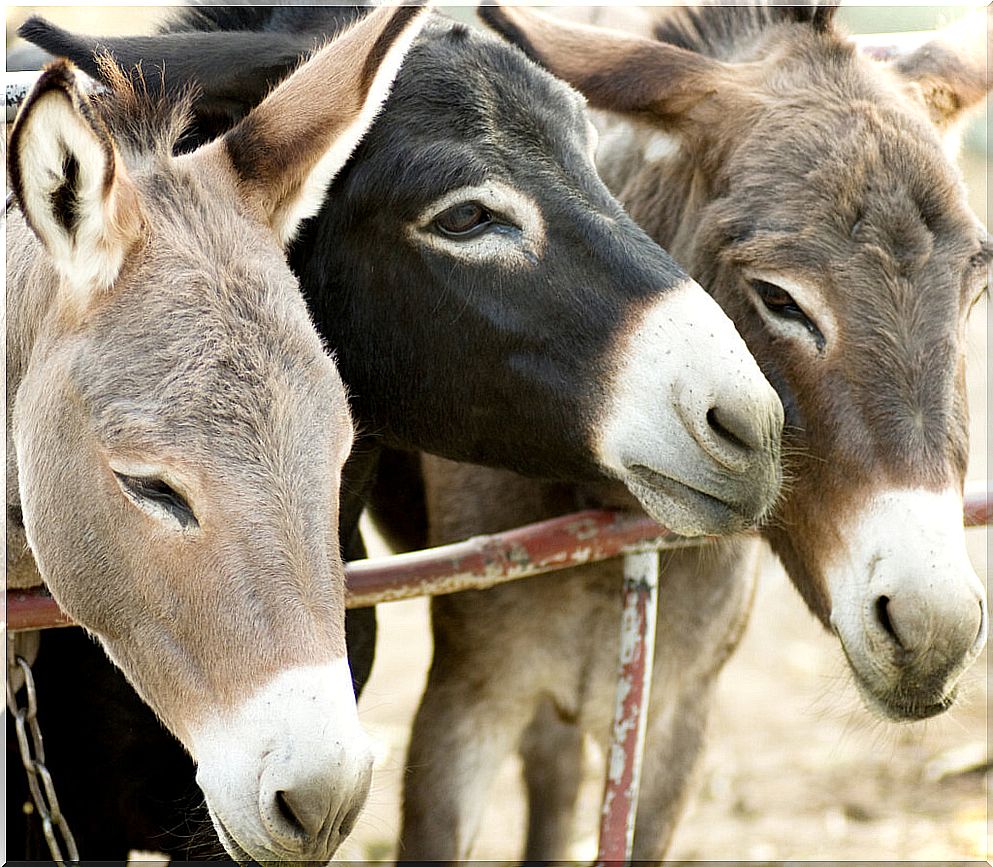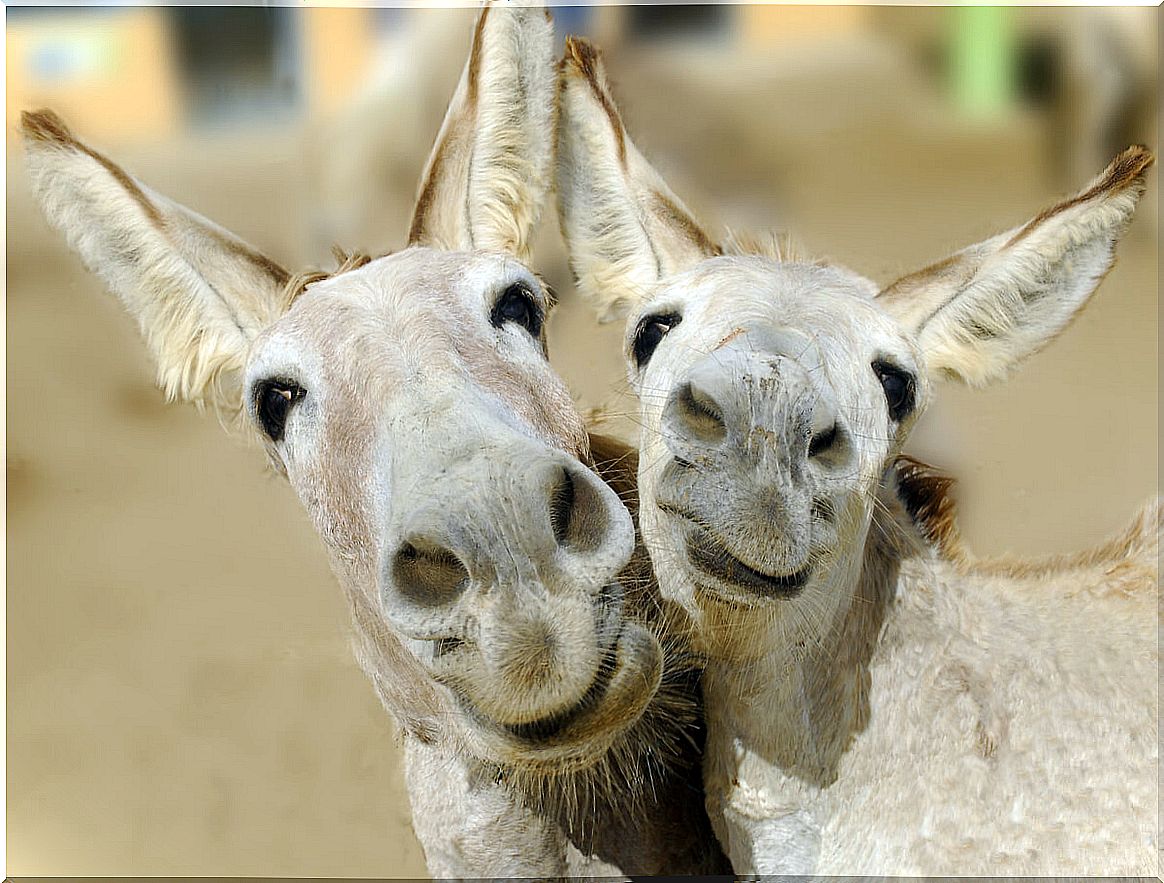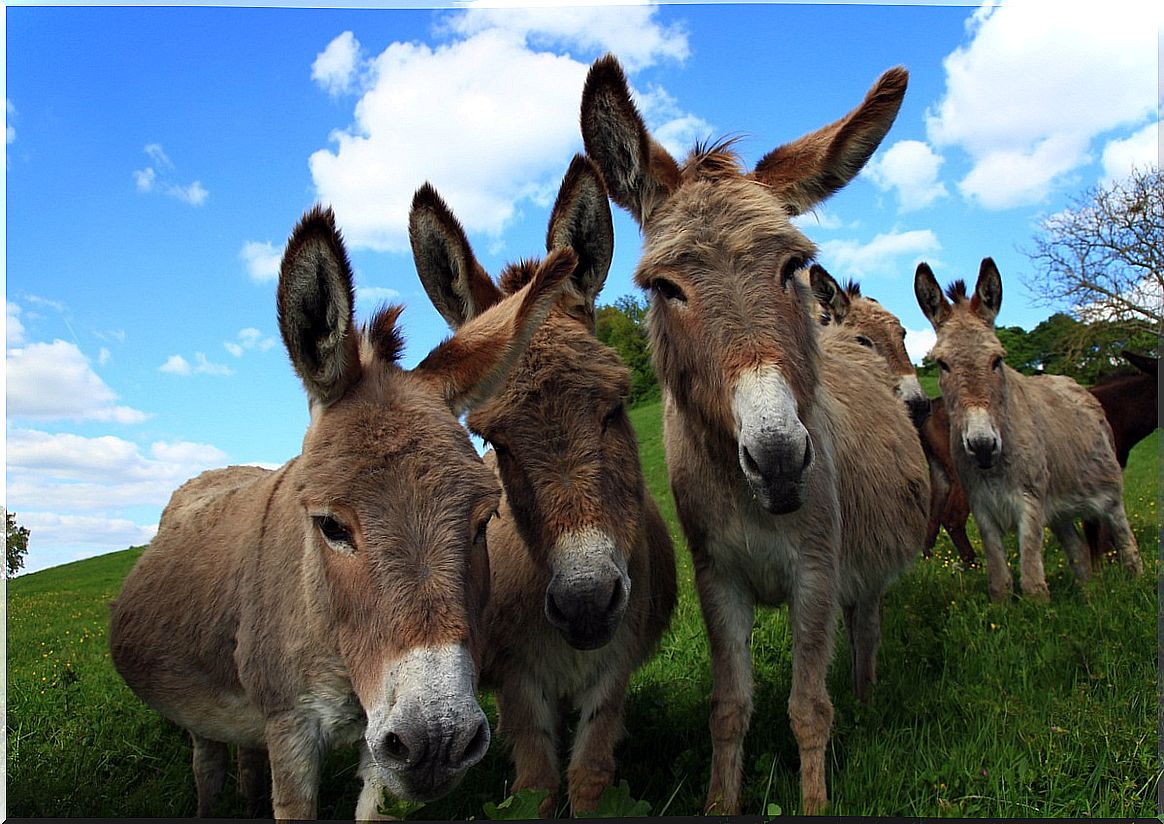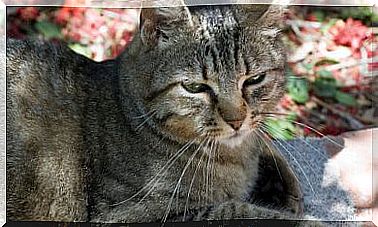Burrolandia: A Refuge For Abused Donkeys

Donkeys are one of the species most affected by speciesism. Used for work in the fields or for the transport of goods and people, with mechanization they have become obsolete, bringing the different varieties created over millennia by humans to the brink of extinction. To avoid this demographic decline, Burrolandia was born, a refuge that welcomes them and gives new life to these forgotten equidae.
In the following lines you can read about the use of donkeys as a working tool and what this interaction with humans has meant for the species. You will also get to know first hand the work that this shelter for abused donkeys does.
Why the donkey as a working animal?
Its strength and the nature of its bone structure make the donkey ( Equus africanus asinus) a species susceptible to exploitation by man. In fact, it can drag up to 4 times its weight. Additionally, these mammals are docile animals, and their stubbornness is usually a sign of fear, not low intelligence.
However, advances in farming techniques have made these cute equidae no longer necessary for most farmers. This, as you can guess, has in turn led to thousands of dropouts.

How was Burrolandia born?
Burrolandia México was founded in 2006, thanks to the commitment of a civil association for the conservation and protection of the domestic donkey. Currently, this sanctuary is home to around 50 donkeys rescued from neglect and mistreatment.
It is a non-profit organization, so it supports itself through donations, solidarity tourism and events. The property also has a museum dedicated to this species.
This space is unique in Latin America and performs important educational and conservation work for the species. Located in Otumba, today it is possible to visit both the museum and the animals, to learn the stories of each of its inhabitants and even to pet and take care of them.
Conservation status of donkeys in Mexico
A 1991 census in Mexico counted around 1.5 million donkeys, but about 300,000 are left today. The population decline over the past 30 years has been alarming.
Despite being threatened with extinction, there are no conservation or protection programs against neglect and abuse in most countries that have used donkeys for agriculture or other purposes. This is because they are considered part of livestock or mere tools of work.
Burrolandia is not the only donkey refuge in the world
Fortunately, Burrolandia México isn’t the only sanctuary that specializes in donkeys. In other parts of the globe, the inhabitants are also engaged in the conservation of this species. Here are some examples:
- Burrolandia, Madrid: This sanctuary dedicates its efforts to the same purpose as its namesake in Mexico.
- The Donkey Sanctuary: For 50 years they have been helping and caring for donkeys at this shelter in the UK. They have several sections in other countries, including the Italian section “The refuge of the donkeys” .
- Aruba: located on the island of Palm, in the country that gives it its name, this sanctuary has been active since 1996.
In general, among the refugees rescued from any sanctuary dedicated to the protection of animals from human exploitation it will be possible to find at least one donkey. However, if these equidae are the living beings that most fascinate you, we advise you to go to a refuge specialized in this species. And, why not, also get to know the main Italian breeds.

Donkeys have a reputation for being stubborn, dirty, and unintelligent. However, meeting them in a context where they are happy reveals their true nature: they are sociable, affectionate, intelligent and very playful animals. If you ever have the opportunity to deal with them, don’t miss it, because their tender gaze will pulverize any prejudice.









